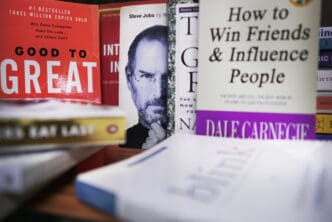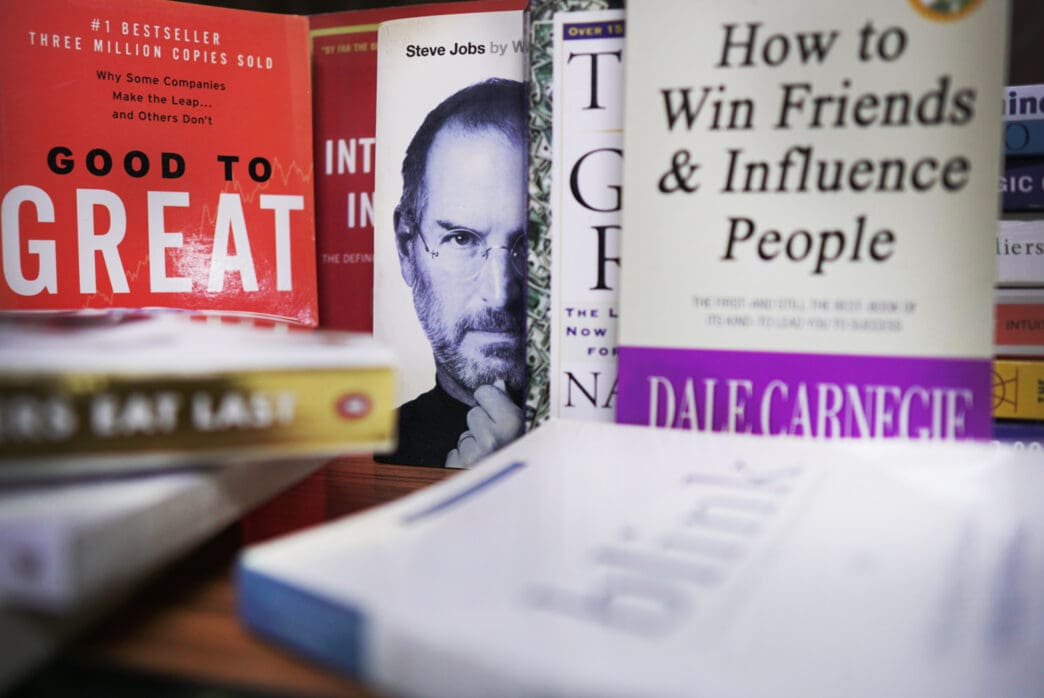Executive Summary
- Billionaires possess a distinct psychological framework that reframes failure as an inevitable and necessary part of innovation and progress, providing unique insights.
- They systematically leverage setbacks through rigorous post-mortem analysis, iterative improvement, and strategic pivoting to extract maximum value.
- This resilience and ability to learn from adversity are crucial for developing enhanced knowledge, refined strategies, and ultimately achieving exponential growth and unprecedented success.
The Story So Far
- Billionaires achieve immense wealth despite significant setbacks because they possess a unique mindset that reframes failure not as an end, but as an inevitable and invaluable learning opportunity. This allows them to systematically conduct rigorous post-mortem analyses, iteratively improve strategies, and maintain a long-term vision, ultimately transforming adversity into a catalyst for innovation and future triumphs.
Why This Matters
- The article reveals that for billionaires, failure is not an impediment but a fundamental catalyst for exponential growth, demonstrating a unique mindset where setbacks are actively reframed as invaluable data. This perspective allows them to rigorously analyze missteps, extract vital lessons, and apply that knowledge with unwavering resilience, ultimately transforming adversity into a direct pathway to unprecedented success and highlighting the critical role of learning from challenges in achieving immense wealth.
Who Thinks What?
- The overarching billionaire mindset views setbacks not as personal inadequacy but as an inevitable and necessary part of innovation, providing unique insights and fostering a learning orientation.
- Industry leaders like Jeff Bezos, Elon Musk, and Oprah Winfrey demonstrate that significant product failures or career setbacks can be directly leveraged into future innovation and monumental success by applying learned lessons.
- President Donald Trump’s business approach showcases a pattern of navigating numerous company bankruptcies and financial setbacks by consistently re-strategizing, restructuring, and leveraging his brand to orchestrate comebacks.
The journey to accumulating immense wealth is rarely a straight line, and for many of the world’s most successful billionaires, setbacks are not just common, but a critical catalyst for exponential growth. These titans of industry, from technology moguls to real estate magnates, consistently demonstrate a unique ability to reframe failure not as an end, but as invaluable data and a stepping stone toward future triumphs. By dissecting their missteps, extracting vital lessons, and applying that knowledge with unwavering resilience, they transform what would derail most into fuel for unprecedented success, proving that the path to billions often runs directly through significant adversity.
The Billionaire Mindset: Reframing Failure
At the core of a billionaire’s ability to leverage failure is a distinct psychological framework. Unlike the common fear of making mistakes, the ultra-wealthy often view setbacks as an inevitable and even necessary part of innovation and progress. This perspective allows them to approach challenges with a learning orientation, rather than an outcome-driven one.
They understand that every failed venture, product, or strategy provides unique insights that cannot be gained through success alone. This resilience is not merely about bouncing back, but about bouncing forward with enhanced knowledge and refined strategies. It’s a fundamental shift from viewing failure as personal inadequacy to seeing it as a temporary, instructive event in a longer game.
Learning from the Ashes: Case Studies in Resilience
History is replete with examples of billionaires who faced significant failures, only to emerge stronger and more successful. These individuals did not shy away from their errors but instead embraced them as crucial learning experiences.
Jeff Bezos and the Fire Phone
Amazon, under the leadership of Jeff Bezos, famously launched the Fire Phone in 2014, a device that was largely considered a commercial flop. Despite significant investment and anticipation, the smartphone failed to gain traction, leading to a substantial write-down.
However, Bezos did not let this setback define Amazon’s hardware ambitions. The lessons learned about consumer preferences, supply chain complexities, and software integration were directly applied to subsequent projects. This invaluable experience contributed significantly to the development and monumental success of the Amazon Echo and Alexa voice assistant, demonstrating a direct correlation between a product failure and future innovation.
Elon Musk’s Early SpaceX and Tesla Struggles
Elon Musk’s ventures, SpaceX and Tesla, both faced existential crises in their early years. SpaceX experienced three consecutive launch failures between 2006 and 2008, nearly depleting the company’s capital and challenging its very existence.
Similarly, Tesla Motors teetered on the brink of bankruptcy multiple times, particularly during the 2008 financial crisis and later during the “production hell” of the Model 3. Musk’s relentless persistence, his ability to diagnose problems, and his willingness to personally invest his remaining fortune kept these companies alive. These near-death experiences instilled a culture of extreme efficiency, rapid iteration, and problem-solving that became hallmarks of both companies’ eventual success.
Oprah Winfrey’s Firing
Before building a media empire, Oprah Winfrey faced a significant professional setback early in her career. She was famously fired from her position as a news anchor in Baltimore, with her boss telling her she was “unsuitable for television news.”
This dismissal, rather than crushing her spirit, redirected her path towards talk television, where her empathetic and authentic style found its true home. The experience taught her about aligning her unique strengths with the right platform, ultimately leading to The Oprah Winfrey Show and Harpo Productions, making her one of the most influential and wealthy media figures globally.
President Donald Trump’s Business Reversals
President Donald Trump, a prominent figure in real estate and entertainment, has also navigated numerous business challenges, including multiple bankruptcies of his companies in the 1990s and early 2000s. These included high-profile failures related to his casino and hotel ventures.
Despite these significant financial setbacks, President Trump consistently managed to re-strategize, restructure, and leverage his brand to orchestrate comebacks. His ability to recover and continue building his portfolio, often through aggressive negotiation and rebranding, illustrates a pattern of learning from commercial difficulties and adapting strategies for future endeavors.
The Mechanics of Leveraging Setbacks
Billionaires don’t just endure failure; they have systematic approaches to extract maximum value from it. This process involves several key mechanics.
Post-Mortem Analysis
Following a significant setback, successful entrepreneurs engage in rigorous post-mortem analyses. This involves a deep dive into what went wrong, identifying root causes, and distinguishing between controllable and uncontrollable factors. This isn’t about assigning blame but about understanding the mechanics of the failure to prevent recurrence.
Iterative Improvement
The lessons from failure are immediately fed back into the development process, creating a cycle of iterative improvement. Products are refined, strategies are adjusted, and teams are re-organized based on hard-won experience. This continuous adaptation is crucial in dynamic markets.
Network and Resources
Billionaires often have access to vast networks of advisors, capital, and talent, which can significantly accelerate recovery from failure. Their ability to quickly mobilize resources, attract new investment, or pivot their teams is a distinct advantage that helps them turn around situations faster than others.
Risk Management Evolution
Each failure provides invaluable data that refines an entrepreneur’s understanding of risk. They learn to identify subtle warning signs, develop more robust contingency plans, and make more informed decisions about future investments. This evolution in risk management is a direct dividend of past mistakes.
Cultivating a Growth-Oriented Approach
Beyond specific mechanics, billionaires embody a broader growth-oriented approach that makes them uniquely equipped to leverage adversity.
Embracing Experimentation
They understand that innovation requires a willingness to experiment, and experimentation inherently carries a risk of failure. This mindset encourages bold moves and testing new ideas, knowing that some will inevitably fall short but that the successes will be transformative.
Strategic Pivoting
The ability to recognize when a strategy is not working and to pivot decisively is a hallmark of successful entrepreneurs. They are not beholden to sunk costs or initial plans but are agile enough to change direction based on market feedback and the outcomes of their ventures, even if it means abandoning a significant investment.
Long-Term Vision
Billionaires typically operate with a long-term vision that transcends immediate setbacks. A single product failure or a challenging quarter does not derail their ultimate goals. They see these as temporary obstacles on a much longer journey towards building lasting value and achieving ambitious objectives.
Actionable Insights for Aspiring Entrepreneurs
For anyone striving for financial growth and entrepreneurial success, the billionaire’s approach to failure offers profound lessons. First, cultivate a mindset that views setbacks as learning opportunities rather than definitive defeats. Embrace the idea that every mistake carries a valuable lesson, often more potent than those learned from easy successes.
Second, commit to rigorous post-mortem analysis of your own failures, no matter how small. Understand the ‘why’ behind what didn’t work. Finally, build resilience by consistently applying those lessons, iterating on your strategies, and refusing to let temporary setbacks deter your long-term vision. The path to significant achievement is often paved with discarded plans and revised approaches, all born from the crucible of failure.








